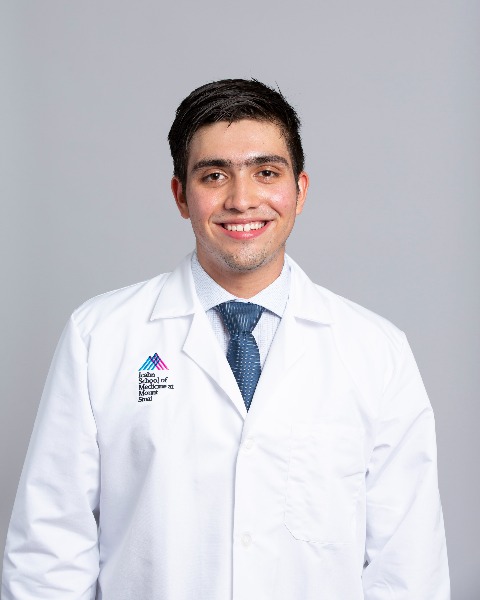Tumor Biology, Biomarkers, and Pathology
59: Genomic characterization of recurrent uRCC tumors

Juan Sebastian Arroyave Villada, B.S.
Medical Student
Icahn School of Medicine at Mount Sinai, United States
Lead Author(s)
Background: Unclassified Renal Cell Carcinoma (uRCC) refers to a subset of renal tumors that cannot be adequately classified within the common RCC subtypes and typically follow an aggressive disease course. Genetically characterizing uRCC and possible associated genomic alterations, can result in improved and individualized oncologic treatment. We describe and compare genomic alterations in our patients and stratify our cohort by recurrence status.
Methods: We retrospectively reviewed demographic and oncologic data from our prospectively collected institutional database to identify patients undergoing surgery for localized uRCC from 2003-2022. Corresponding genomic data was retrieved from our institutional database (MSK-IMPACT). Wilcoxon rank-sum test and Pearson’s chi-squared tests were used to compare genomic data between groups.
Results: The median age at time of nephrectomy was 60 (IQR:50-70), 58% of patients (n=35) were male, and 38% (n=23) were former smokers. Median tumor size was 5.5cm (IQR:3.2-8.0), and 50% (n=30) were pT3 stage. 55% (n=33) exhibited disease recurrence over a median follow-up of 51.3 months (IQR:71.3-18.9). The fraction genome altered was significantly different between the patients whose disease recurred and those that didn’t (0.18 vs. 0.04, p=0.002). Patients with recurrent disease also had tumors with a higher mutational burden (3.9 vs. 0.9, p=0.002), and a higher microsatellite instability score (0.25 vs. 0, p=0.007) (Figure 1). Examining for differences in genetic alterations, CDKN2A was significantly enriched in recurrent tumors compared to non-recurrent (21.2% vs. 0%, p=0.011). Recurrent patients were more likely to have at least 1 clonal driver mutation in 3p associated loci (SETD2, BAP1, PBRM1) or NF2 (55% vs. 15%, p=0.003).
Conclusions: uRCC demonstrates an aggressive disease course with 55% of patients recurring. We identified genomic alterations correlating with recurrence, which may help select patients for treatment intensification, though confirmatory studies are required.
Methods: We retrospectively reviewed demographic and oncologic data from our prospectively collected institutional database to identify patients undergoing surgery for localized uRCC from 2003-2022. Corresponding genomic data was retrieved from our institutional database (MSK-IMPACT). Wilcoxon rank-sum test and Pearson’s chi-squared tests were used to compare genomic data between groups.
Results: The median age at time of nephrectomy was 60 (IQR:50-70), 58% of patients (n=35) were male, and 38% (n=23) were former smokers. Median tumor size was 5.5cm (IQR:3.2-8.0), and 50% (n=30) were pT3 stage. 55% (n=33) exhibited disease recurrence over a median follow-up of 51.3 months (IQR:71.3-18.9). The fraction genome altered was significantly different between the patients whose disease recurred and those that didn’t (0.18 vs. 0.04, p=0.002). Patients with recurrent disease also had tumors with a higher mutational burden (3.9 vs. 0.9, p=0.002), and a higher microsatellite instability score (0.25 vs. 0, p=0.007) (Figure 1). Examining for differences in genetic alterations, CDKN2A was significantly enriched in recurrent tumors compared to non-recurrent (21.2% vs. 0%, p=0.011). Recurrent patients were more likely to have at least 1 clonal driver mutation in 3p associated loci (SETD2, BAP1, PBRM1) or NF2 (55% vs. 15%, p=0.003).
Conclusions: uRCC demonstrates an aggressive disease course with 55% of patients recurring. We identified genomic alterations correlating with recurrence, which may help select patients for treatment intensification, though confirmatory studies are required.
